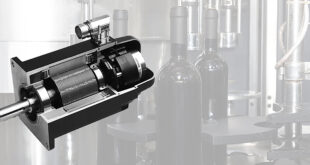When thermal demands increase, wiring systems need to maintain performance and precision. In aerospace, defence and space platforms, these systems often face environmental extremes that can weaken insulation and distort signals. Each element of the harness, from the wire to the wrap, must withstand this stress. Rush Holladay explains how distributors can support reliability through compliant materials, dependable logistics and end-to-end quality control
Extreme temperatures shift how materials behave. Electrical resistance increases and dielectric strength changes. At high frequencies, signal attenuation and impedance mismatch can threaten the integrity of miss PTFE, polyimide and ETFE, chosen for their ability to retain electrical and mechanical properties under sustained thermal exposure.
These materials are typically specified for temperature ranges from around –65°C to 260°C, depending on the insulation type and construction. While PTFE can withstand the full range, most specifications sit within the upper range of 135°C to 260°C, in line with typical Mil-Spec classifications. Each element must work as expected across the full operating envelope, even as that envelope continues to expand.
Material compliance, not compromise
Standards like AS22759 and MIL-DTL-27500 set precise construction and performance criteria for high-temp cables, governing everything from stranding and shielding to insulation types and test methods. Testing, often performed in accordance with AS4373, the standard test methods for aerospace wires and cables, includes thermal shock, tensile strength, dielectric withstand and elongation under load.
Specifications alone, however, do not guarantee reliability. Much depends on the assurance that a material is compliant, and that compliance can be proven. Engineers and procurement teams often prioritise documentation and retention as much as they do thermal ratings. In practice, this means sourcing only from authorised manufacturers, tracking lot-level history and maintaining clear visibility on shelf life and handling.
It’s not just the wire
It is easy to focus on the conductor, but in many high-temperature systems, the materials surrounding the wire are just as critical. Heat shrink tubing, sleeving, tapes, boots and splices all operate under the same environmental pressures and must be matched carefully to the cable and application.
These components are also covered by formal specifications and engineered to maintain their performance characteristics. However, specification alone does not eliminate the risk of failure. When mismatched, poorly stored or improperly applied, even compliant components can become weak points in the system.
To reduce the risk of mismatch or omission, some teams now approach the full harness bill of materials as a single entity, planning for it early and building from vetted sources. In production environments, pre-kitted harness materials can reduce handling errors while accelerating builds and ensuring consistency from prototype to rollout.
Navigating the PFAS shift
For decades, fluoropolymer-based materials have formed the backbone of high-temperature wiring. PTFE in particular has offered excellent thermal and dielectric stability, making it a go-to choice for aerospace and defence programmes. But regulatory pressure is rising. In May 2025, the U.S. Environmental Protection Agency delayed its PFAS reporting deadline by nine months, yet high-reliability sectors remain under scrutiny. The market is beginning to shift as suppliers reassess their product lines and engineers monitor how regulatory changes could affect long-term material availability.
Suppliers have already begun exiting parts of the heat shrink and tape sector. The search for viable alternatives is underway, but no replacement materials have yet entered formal qualification. Once identified, any new solution will require extensive validation, which can take several years. In the meantime, engineers must justify existing material use with greater rigour, even as uncertainty persists over what future replacements may look like.
Staying ahead of these shifts requires close coordination with suppliers, awareness of regulatory timelines, and visibility into material availability. Engagement with standards bodies, such as the SAE or NEMA spec committees, has become increasingly valuable, not only for anticipating change, but for helping shape it.
Rising demands, narrowing margins
Thermal resilience is no longer just a checkbox. As systems become more compact and power-dense, and as more platforms operate in low Earth orbit or variable thermal environments, the expectations placed on wiring systems are expanding. Engineers must weigh factors such as weight, cost, availability, and temperature rating, often within compressed demand cycles. Lead times for key materials can stretch into months, delaying harness fixtures, which end up disrupting programme timelines.
In this environment, specifications alone do not provide the full picture. Design assurance comes from understanding how materials interact under pressure, and how sourcing decisions affect long-term performance. From selection through to integration, reliability relies on consistent, informed decision-making at every stage of the process.
Rush Holladay is Director of Global Product Management, Wire, Cable and HMP at wiring specialist WireMasters.
 Engineer News Network The ultimate online news and information resource for today’s engineer
Engineer News Network The ultimate online news and information resource for today’s engineer
